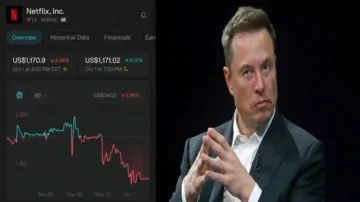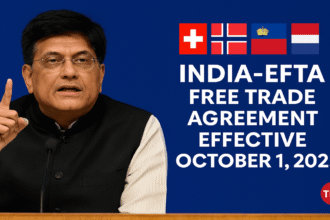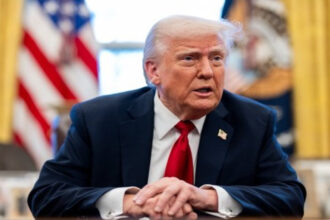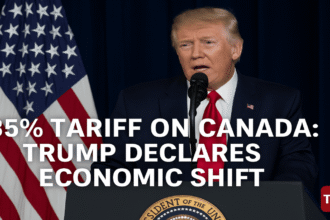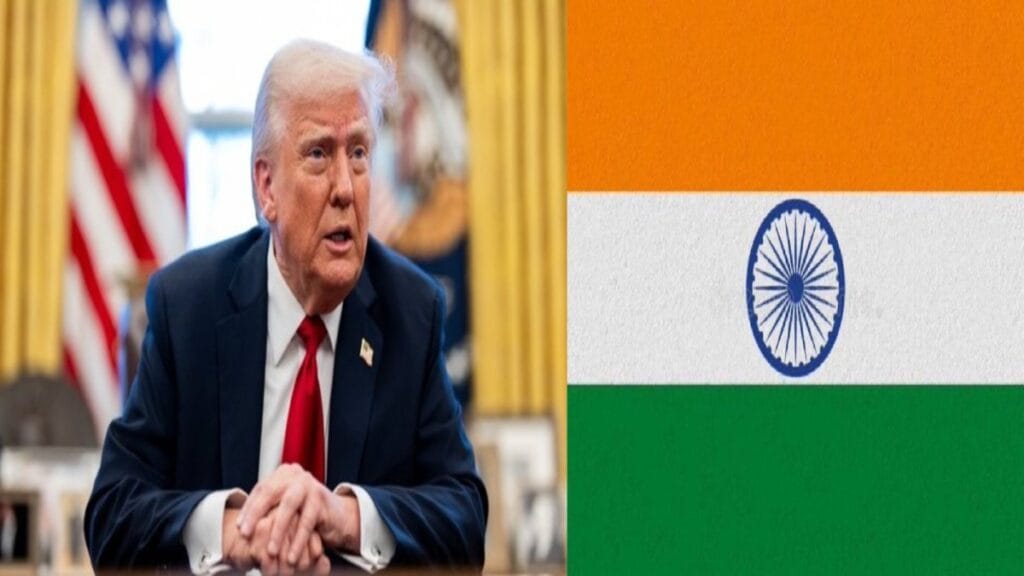
In a dramatic policy declaration that has sent shockwaves through the global economic and diplomatic corridors, US President Donald Trump announced a 25% tariff on Indian imports, set to take effect from August 1, 2025. The move is part of Trump’s revived “America First” trade agenda, which now directly targets one of the United States’ key allies in Asia India.
Trump’s Explosive Statement
In a post that instantly went viral, Donald Trump wrote:
“…India is our friend, we have, over the years, done relatively little business with them because their Tariffs are far too high… they have the most strenuous and obnoxious non-monetary Trade Barriers of any Country… they have always bought a vast majority of their military equipment from Russia… INDIA WILL THEREFORE BE PAYING A TARIFF OF 25%, PLUS A PENALTY… STARTING ON AUGUST FIRST.”

This marks a significant shift in US-India trade relations and puts immense diplomatic pressure on Prime Minister Narendra Modi’s government just months before India’s crucial winter parliamentary session.
Why is the US Imposing 25% Tariffs on India?
The 25% tariffs on India are framed as a penalty for what Trump calls a “decades-long imbalance in trade practices.” According to the statement and White House aides, the move is driven by several reasons:
1. High Import Tariffs
India is often criticized by the United States and European Union for maintaining high import tariffs on foreign goods, particularly in sectors like automobiles, electronics, and agriculture. While India defends these tariffs as protective measures for its growing economy, the USTR (United States Trade Representative) has long listed India as a “priority watchlist” country due to such barriers.
2. Non-Monetary Trade Barriers
Trump slammed India for using “strenuous and obnoxious” regulatory hurdles, such as product standards, license requirements, and lengthy approvals that discourage American companies from doing business freely.
3. Defense and Energy Dependence on Russia
The most sensitive aspect of the announcement was Trump’s criticism of India’s long-standing military and energy deals with Russia. Despite global sanctions and diplomatic pressure, India has continued to import Russian S-400 missile systems, fighter aircraft, and crude oil, citing strategic autonomy and energy security.
4. Failure to Align with US Led Sanctions on Russia
India has repeatedly abstained from UN resolutions condemning Russia’s actions in Ukraine, instead promoting dialogue and neutrality. Trump’s announcement directly links the tariff decision with India’s failure to comply with US-led global sanctions on Russia, labeling it as “not good at all.”
What Will the 25% Tariff on India Affect?
While the White House has not released a full list of affected items, trade analysts expect the tariff to impact:
- Pharmaceutical exports
- Auto parts and components
- Steel and aluminum
- Textiles and apparel
- Information technology products
India exports approximately $85 billion worth of goods to the United States annually, and the 25% tariff could target nearly $25–30 billion worth of that trade.
Economic Impact: A Two Edged Sword?
Impact on India
India’s economy, still recovering from global slowdown pressures, could face substantial challenges. Key export industries such as pharma, textiles, and tech services will be hardest hit. India’s Ministry of Commerce has called an emergency meeting with trade associations to assess the potential losses and prepare retaliatory measures.
Impact on the US
Imposing 25% tariffs on India may also backfire for the US. Several American companies rely on Indian imports for raw materials, software development, and manufacturing support. Price hikes, supply disruptions, and diplomatic tensions may lead to consumer level inflation and business dissatisfaction in key American industries.
Diplomatic Reactions: India Urges Dialogue
India’s Ministry of External Affairs released a measured statement:
“We are committed to a strong and balanced trade partnership with the United States. While we recognize concerns raised by the US side, unilateral actions hurt mutual trust. We urge the US to re-engage in meaningful dialogue.”
Historical Context: A Recurring Pattern
This is not the first time Trump has taken a hard stance on India. During his 2016–2020 presidency, he revoked India’s GSP (Generalized System of Preferences) in 2019, citing lack of reciprocal market access. He also criticized Indian tariffs on Harley-Davidson motorcycles, making it a symbolic issue in trade talks.
Now in 2025, Trump’s re-election has brought back his aggressive trade rhetoric, reminiscent of the US-China tariff wars during his earlier tenure.
What Happens Next? Three Possible Scenarios
1. Retaliation from India
India could impose counter-tariffs on US agricultural products, whiskey, and industrial goods sectors previously targeted during GSP withdrawal.
2. Negotiated Settlement
Backchannel diplomacy between Washington and New Delhi could lead to a limited rollback or suspension of the tariffs in exchange for concessions from India on market access or regulatory alignment.
3. Legal Appeal via WTO
India might challenge the tariffs at the World Trade Organization, although that route is time-consuming and has limited enforcement value due to the WTO Appellate Body crisis.
Political Ramifications in Both Countries
In the United States:
Trump’s move is seen as an appeal to his domestic industrial base, especially in Rust Belt states. It plays well with voters concerned about outsourcing, trade deficits, and foreign policy assertiveness.
In India:
The timing is crucial. With elections in several Indian states coming up, foreign policy credibility will become a talking point. Modi’s critics may use this episode to question the effectiveness of his hug diplomacy and personal rapport with world leaders.
A Volatile New Phase in US-India Relations
Trump’s declaration of 25% tariffs on India marks a turning point in US-India relations. Whether this is a negotiation tactic, a campaign strategy, or the beginning of a deeper rift, remains to be seen.
As both countries navigate this diplomatic storm, the global community watches closely. For India, the challenge will be to protect its economic interests while maintaining strategic autonomy. For the US, ensuring that such measures don’t hurt its own businesses and alliances will be key.
Stay Connected with The News Drill for more updates. Stay informed. Stay updated. Stay Ahead.
Have insights or tips about this story? Contact us: contact@thenewsdrill.com
Submit a tip or article: editor@thenewsdrill.com





